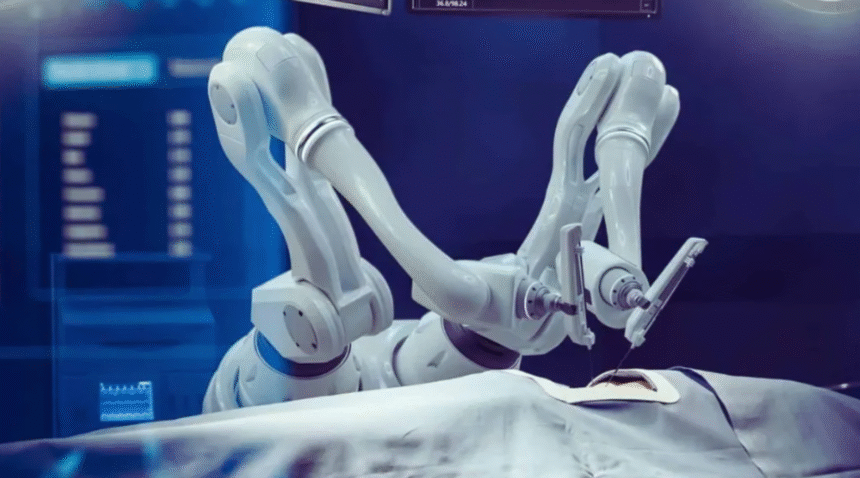A groundbreaking advancement in the field of robotic surgery has been achieved by scientists at Johns Hopkins University, where for the first time, a surgical robot performed a complex portion of a gallbladder removal operation without any direct intervention from a human surgeon, according to Neuroscience.
The robot, named Surgical Robot Transformer-Hierarchy (SRT-H), is the first of its kind to demonstrate the ability to understand, decide, and self-correct during a surgical procedure, pushing the boundaries of conventional medical technology.
The research team trained the robot using hundreds of videos featuring Johns Hopkins surgeons performing operations on pig cadavers. These videos were accompanied by detailed step-by-step annotations to help the robot develop a comprehensive understanding of the surgical process. As a result, SRT-H successfully completed the procedure with 100% accuracy on an artificial model that mimics the human body.
Unlike traditional surgical robots that simply follow instructions, SRT-H improves in real-time—similar to how a medical resident learns under the supervision of an experienced mentor. Although the procedure took longer than it would with a skilled human surgeon, the quality of the outcome was comparable.
This achievement builds upon the same artificial intelligence architecture that powers ChatGPT, providing the robot not only with technical precision but also with the ability to interact and learn like a human professional.
“This breakthrough shifts us from robots that merely follow instructions to robots that understand and make decisions during surgery,” said Axel Krieger, the project lead.
In the next phases, the research team aims to expand training to include a wider variety of procedures, with a long-term vision of enabling a fully autonomous surgical operation—from start to finish.







